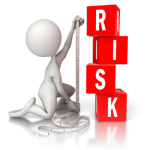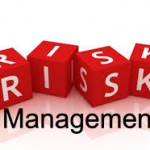The field of project management has intrigued me for the past three years – ever since I participated in a project to implement a new accounting system at work. While I was only an individual contributor on the project representing finance, I had an opportunity to observe the project leader in action. After the project concluded, I walked away impressed by his discipline and decision making ability under stressful situations. I have since wondered if I can succeed as a project manager.
After taking this class and interviewing a project manager, I am starting to wonder if project management is suited for me. After reading the article “Do you have what it takes to be a project manager” by Moira Alexander on CIO.com, I may be convinced that project management is not for me. Moira has identified 8 facets of the job to decide if it is the right career choice for you. Do you think you have what it takes? Do you think you can handle the things listed below?
Project management is fast-paced: Project management is often fast-paced and filled with deadlines and shifting priorities. You are constantly challenged with new obstacles. If you thrive in fast paced environment, then you have passed the first gate in your decision to be a project manager.
Project management comes with an abundance of uncertainty: As we saw in class with the resource and cost assignment exercise, things can change from week to week. Uncertainty is a big part of projects. Being able to deal with uncertainty under duress is a big part of being a good project manager. Do you think you can handle not knowing what’s lurking in the background waiting to jump in and ruin your plans?
Project management involves constant pressure and stress: One of the constants in project management is persistent pressure and stress. You are constantly juggling multiple things. Are you someone who can stand the heat?
Project management means dealing with continual change: Due dates, deliverables, costs and resource availability can change without any notice. As a good project manager, you are expected to adapt to change and handle certain level of chaos in your life. Do you think you can handle continual change? If you are someone who likes structure and routine in your life, this may not be the field for you.
Project management means multiple deadlines: Prioritizing and managing multiple deadlines are essential part of successful project management. Project deadlines are constantly evaluated and maybe altered. This can require you to balance human and financial resources, and can also impact the quality of the product or services being delivered.
Project management means dealing with internal and external conflict: Dealing with difficult people is one of the most dreaded aspects of project management. However, this is an essential skill for good project managers. Being able to influence people require skills and tact. Are you able to work with people and be prepared to set aside your ego and opinion?
Project manager have demanding schedules: If you are looking for a 9-5 job, project management is not for you. As stated in the article, “project managers often “eat, sleep and breathe” project management from the initiation through to the close-out”. Burnout is a serious issue for project teams and especially project managers.
Project management requires exceptional organization skills: Exceptional organizational skills are a must-have for successful project managers. Being able to handle all the things mentioned above requires great organizational skills.
Now that you have an idea of what the job entails, are you up for the challenge? Do you have what it takes to be a project manager?


